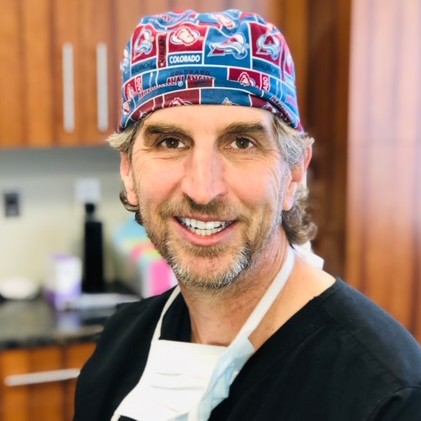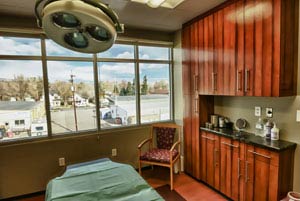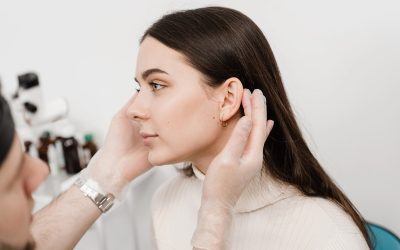Blepharoplasty, or eyelid surgery, is a highly effective procedure for rejuvenating the eyes by addressing sagging skin, puffiness, and other signs of aging. While the results are transformative, the recovery process plays a critical role in achieving optimal outcomes. Many patients are surprised to learn that healing from blepharoplasty is a gradual journey involving physical, emotional, and lifestyle considerations. Recovery is not just about waiting for swelling and bruising to subside; it’s about how the body adapts, how patients care for themselves, and how they follow the tailored guidance of their surgeon. This article explores the healing process in depth, offering insights into what patients can expect, practical recovery tips, and how long it takes to achieve the final, refreshed results. By understanding each phase of recovery, you’ll feel better prepared for the journey and confident in your decision to pursue blepharoplasty.
What to Expect Immediately After Blepharoplasty
Immediately after blepharoplasty, patients can expect a range of temporary symptoms that are completely normal as part of the body’s healing process. Swelling and bruising around the eyes are common and may extend to the surrounding areas, including the cheeks. These symptoms are most pronounced during the first 48 hours and will gradually subside over the next several days. It’s also normal to experience mild discomfort, which can often be managed with prescribed or over-the-counter pain medications.
Vision may appear blurry initially due to swelling or the application of lubricating ointments, which are used to keep the eyes moisturized and protected. Some patients may notice increased tearing or light sensitivity, both of which typically resolve as the eyes heal. Cool compresses are often recommended during this time to reduce swelling and provide soothing relief. Additionally, your surgeon may advise keeping your head elevated, even while sleeping, to minimize fluid retention around the surgical area.
Small strips or stitches at the incision sites are a normal part of the recovery process, and these will be removed during a follow-up visit. It’s important to avoid any strenuous activities or bending over during this early phase to prevent excess pressure on the eyes. Staying calm, following post-operative instructions, and allowing yourself adequate rest are key to setting the foundation for a smooth and successful recovery.
Stages of the Blepharoplasty Healing Process
Week 1: The Early Healing Phase
The first week after blepharoplasty is marked by noticeable swelling, bruising, and mild discomfort. Patients may feel tightness around the eyes as the tissues begin to heal. During this stage, it’s crucial to rest, keep the head elevated, and use cold compresses as directed to reduce swelling. Stitches, if used, are typically removed by the end of the first week, and most patients start seeing improvements in bruising and swelling by this point.
Weeks 2-4: Gradual Recovery and Resuming Activities
By the second week, the swelling and bruising have significantly decreased, and patients often feel ready to return to light activities. Makeup can be used to conceal any lingering discoloration, and vision will typically return to normal. During weeks three and four, most individuals feel comfortable resuming non-strenuous daily routines, including desk work and social engagements. Scars, if present, begin to soften and fade, blending more naturally with the surrounding skin.
Weeks 5-8 and Beyond: Long-Term Healing
The final stages of healing occur over the course of two months and beyond. Residual swelling, which may be minor, continues to resolve. The results become more refined as the tissues settle into their new contours. By eight weeks, most patients achieve a refreshed, natural appearance, although full recovery and scar maturation can take several months. Following all aftercare instructions ensures a smooth healing process and the best possible outcome.
Common Concerns During Recovery
Recovering from blepharoplasty can raise several concerns for patients, most of which are temporary and part of the healing process. Swelling and bruising around the eyes are the most common concerns, with swelling sometimes appearing uneven or more pronounced in certain areas. This is normal and typically subsides over the first two weeks, but patients can use cool compresses and keep their head elevated to manage these symptoms. Bruising may last slightly longer but will fade gradually, with most discoloration resolved by the third or fourth week.
Another common concern is blurred or fluctuating vision. This may result from swelling, ointments applied to the eyes, or the healing process itself. In most cases, this resolves within a few days or weeks without intervention. Some patients may also notice increased tearing or dry eyes. Surgeons often recommend artificial tears or lubricating ointments to alleviate these symptoms during recovery.
Patients occasionally worry about visible scars. While some redness or slight thickening around the incision sites is normal in the early stages, scars generally fade over time. If scarring persists, silicone-based treatments or other interventions can help improve their appearance.
Finally, it’s important to monitor for signs of complications, such as persistent pain, increased redness, or discharge from the incision sites. These could indicate infection or other issues and should be promptly addressed by your surgeon. Understanding these common concerns helps patients feel more prepared and reassured during recovery.
Tips for a Smooth Recovery
Recovering from blepharoplasty is a gradual process, but there are several steps you can take to ensure a smoother healing journey. Proper care and attention during the recovery period not only help minimize discomfort but also contribute to achieving the best possible results. Following these practical tips can make a significant difference:
- Follow your surgeon’s instructions carefully: Adhering to post-operative guidelines, including medication schedules, wound care, and activity restrictions, is essential for optimal healing.
- Use cold compresses during the first 48 hours: This helps reduce swelling and provides soothing relief to the delicate eye area.
- Keep your head elevated at all times: Sleeping with extra pillows or in a recliner minimizes fluid buildup around the eyes, speeding up recovery.
- Avoid heavy lifting and strenuous activities: Physical strain can increase blood flow to the surgical site, potentially causing complications like prolonged swelling or bruising.
- Protect your eyes from sunlight: Wear sunglasses when outdoors to shield the healing skin from harmful UV rays, which can darken scars and delay healing.
- Stay hydrated and eat a nutrient-rich diet: Foods high in vitamins C and E, as well as protein, support tissue repair and reduce inflammation.
- Attend all follow-up appointments: Regular check-ins with your surgeon ensure that your recovery is progressing as expected and allow for timely intervention if needed.
By following these tips, you can promote a faster, more comfortable recovery and enjoy the rejuvenated results of your blepharoplasty.
When Can You Resume Normal Activities?
Resuming normal activities after blepharoplasty is a gradual process that depends on the extent of the surgery and your body’s natural healing. Most patients can return to light activities within a week, but certain restrictions are necessary to ensure proper recovery. During the first few days, rest is critical, and activities should be limited to avoid straining the eyes. Tasks such as reading, working on a computer, or watching television should be done in moderation to prevent dryness or discomfort.
For those wondering about returning to work, the timeline often depends on the nature of your job. If your work involves minimal physical activity, you may feel comfortable going back within 7-10 days, especially as swelling and bruising begin to subside. For physically demanding jobs, it’s best to wait at least 2-3 weeks to avoid complications from excessive exertion.
Exercise and strenuous activities, including heavy lifting and intense cardio, should be avoided for at least 3-4 weeks post-surgery. These activities can increase blood flow and pressure around the eyes, potentially interfering with healing. Gentle walks are encouraged to promote circulation without putting undue strain on the body.
Patients can typically resume wearing contact lenses about two weeks after surgery, once the eyes have healed enough to handle them comfortably. Always consult with your surgeon before reintroducing any activities to ensure your recovery is on track and risk-free.
Conclusion
Healing from blepharoplasty is a process that requires patience and proper care, but the results are well worth the effort. By understanding the recovery stages and following expert tips, you can minimize downtime and enjoy long-lasting, rejuvenated results. At Boulder Valley Plastic Surgery, Dr. Jeffrey Swail and his team are committed to guiding you through every step of the journey, ensuring your comfort and confidence along the way. If you’re considering eyelid surgery or have questions about the recovery process, visit us or call (303) 449-6666 to schedule an appointment today. Let us help you achieve your aesthetic goals!





